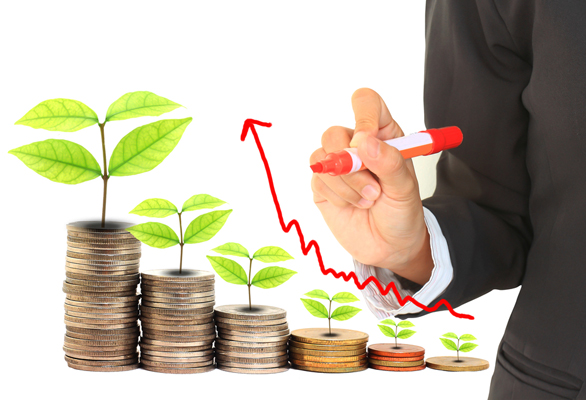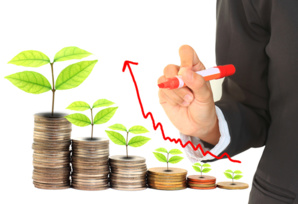Barely on the horizon three years ago, Green Bonds was just fanciful idea and a plaything of International development banks. Today they are likely to be the fastest growing financial market in the world.
Last year the market grew by leaps and bounds to a whopping $38 billion and according to Sean Kidney, the green bonds market could be worth as much as $1 trillion in a single year. If this happens, the estimated humongous sum of $46 trillion that the International Energy Agency says will be required to wean off our dependence on environmentally dirty solutions, is likely to be within grasp.
In the last couple of months, the green bonds market has seen steady growth. Many large scale developers of solar and winds projects, have quickly realized the potentials of the green bond market, an alternative to the more traditional debt and equity market, and have rushed to tap it.
SunEditions made recent history, and tapped the market with its 800 million green bonds. This was in order to finance the purchase of First Wind. Thanks to this deal SunEditions has become the largest renewable energy developer in the world. Similarly, Berkshire Hathaway, tapped the green bonds market through Warren Buffet’s SolarStar Funding, with its $325 million bonds in order to finance solar projects which will generate 579MW.
In order to help it fund the transmission links for ‘Gwynt y Mor’, the world’s second largest offshore wind farm, the European Investment Bank recently tapped the green bonds market with a £339.2 million climate bond.
Although solar and wind developers throughout the UK have tapped the small investors, SolarCity was unique in its approach, when it came out with a $200 milliion asset-linked retail bond so as to finance the working of its solar rooftop leasing model.
Citigroup has also revealed that it will invest approximately $100 billion in the renewable energy market, however, it clarified that the entire sum will not be placed in the green bonds basket. Citigroup’s managing director, Michael Eckhart predicts that the green bonds market is likely to grow up to $100 billion in 2015 itself.
India’s aims to produce 165GW of renewable energy by 2022. The Indian market for green bonds is estimated to be $100 billion. Yes Bank came up with the country’s first green bonds offer with an issue of 80 million in order to finance a variety of renewable energy projects in the nature of biomass, hydro, wind and solar.
US municipalities along with large bank have also woken up to the newly formed green bonds market. Last September Barclays announced the investment equivalent of £1 billion. Deutsche Bank is also poised to tap the green bonds market with an estimated anywhere in the range of €200 million to over €1 billion. As per its group treasurer, Alexander von zur Muehlen, investment in green bonds are prudent since they are highly liquid and act as buffer investments.
The UK’s Labour Party, has said that it will talk to UK’s Green Investment Bank so as to finance clean energy projects. The Australian appetite for green bonds is also rising. Last December saw the National Australian Bank (NAB) come out with an issue of $150million, so as to finance $1.5 billion in 17 green projects, which are typically wind and solar.
Green Bonds have hit the mainstream markets and analyses after analyses, in various financial papers say harper on the same theme. For example, an analyses in Global Capital says that “cynics had been silenced”. Green bonds have joined the mainstream.
References:
http://reneweconomy.com.au/2015/green-bonds-poised-to-be-1-trillion-market-by-2020-2020
Last year the market grew by leaps and bounds to a whopping $38 billion and according to Sean Kidney, the green bonds market could be worth as much as $1 trillion in a single year. If this happens, the estimated humongous sum of $46 trillion that the International Energy Agency says will be required to wean off our dependence on environmentally dirty solutions, is likely to be within grasp.
In the last couple of months, the green bonds market has seen steady growth. Many large scale developers of solar and winds projects, have quickly realized the potentials of the green bond market, an alternative to the more traditional debt and equity market, and have rushed to tap it.
SunEditions made recent history, and tapped the market with its 800 million green bonds. This was in order to finance the purchase of First Wind. Thanks to this deal SunEditions has become the largest renewable energy developer in the world. Similarly, Berkshire Hathaway, tapped the green bonds market through Warren Buffet’s SolarStar Funding, with its $325 million bonds in order to finance solar projects which will generate 579MW.
In order to help it fund the transmission links for ‘Gwynt y Mor’, the world’s second largest offshore wind farm, the European Investment Bank recently tapped the green bonds market with a £339.2 million climate bond.
Although solar and wind developers throughout the UK have tapped the small investors, SolarCity was unique in its approach, when it came out with a $200 milliion asset-linked retail bond so as to finance the working of its solar rooftop leasing model.
Citigroup has also revealed that it will invest approximately $100 billion in the renewable energy market, however, it clarified that the entire sum will not be placed in the green bonds basket. Citigroup’s managing director, Michael Eckhart predicts that the green bonds market is likely to grow up to $100 billion in 2015 itself.
India’s aims to produce 165GW of renewable energy by 2022. The Indian market for green bonds is estimated to be $100 billion. Yes Bank came up with the country’s first green bonds offer with an issue of 80 million in order to finance a variety of renewable energy projects in the nature of biomass, hydro, wind and solar.
US municipalities along with large bank have also woken up to the newly formed green bonds market. Last September Barclays announced the investment equivalent of £1 billion. Deutsche Bank is also poised to tap the green bonds market with an estimated anywhere in the range of €200 million to over €1 billion. As per its group treasurer, Alexander von zur Muehlen, investment in green bonds are prudent since they are highly liquid and act as buffer investments.
The UK’s Labour Party, has said that it will talk to UK’s Green Investment Bank so as to finance clean energy projects. The Australian appetite for green bonds is also rising. Last December saw the National Australian Bank (NAB) come out with an issue of $150million, so as to finance $1.5 billion in 17 green projects, which are typically wind and solar.
Green Bonds have hit the mainstream markets and analyses after analyses, in various financial papers say harper on the same theme. For example, an analyses in Global Capital says that “cynics had been silenced”. Green bonds have joined the mainstream.
References:
http://reneweconomy.com.au/2015/green-bonds-poised-to-be-1-trillion-market-by-2020-2020






